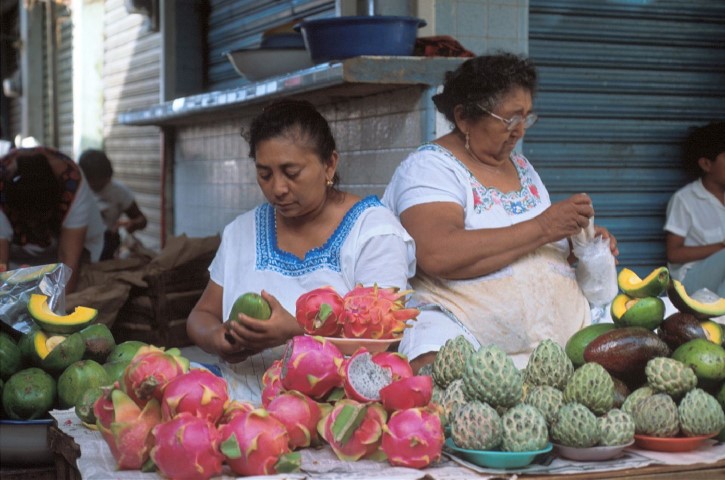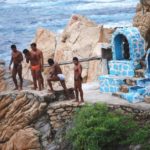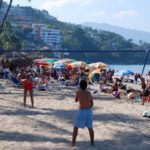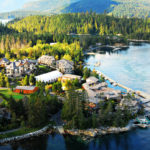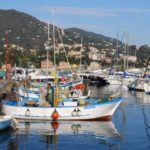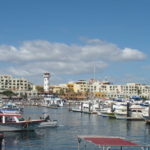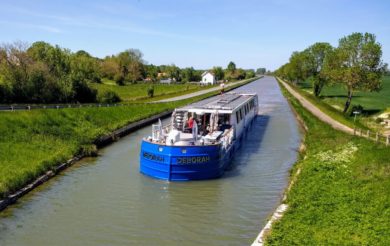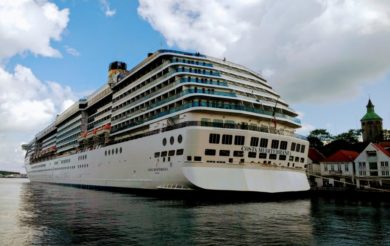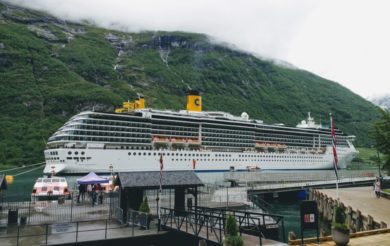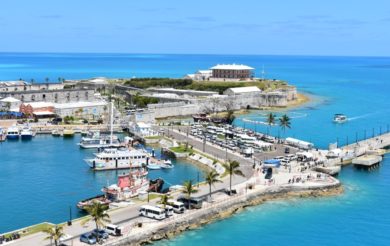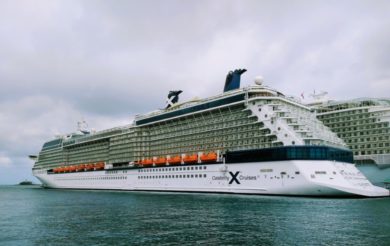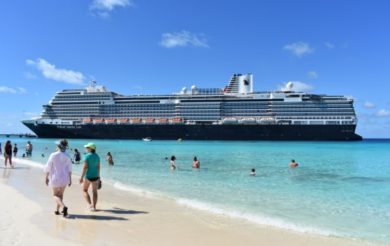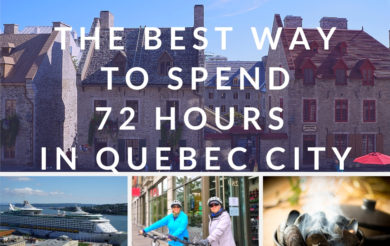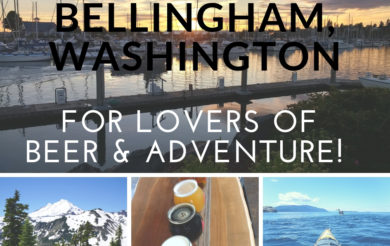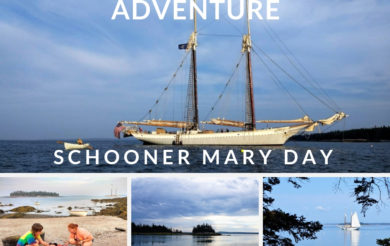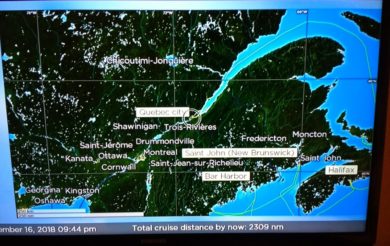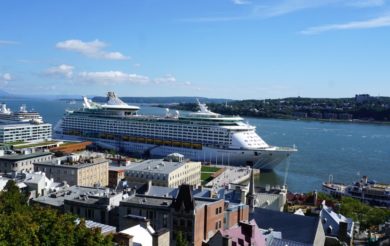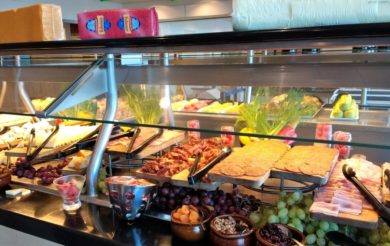Mayan Riviera: Mexico’s Seacoast of History, Colour and Tourism
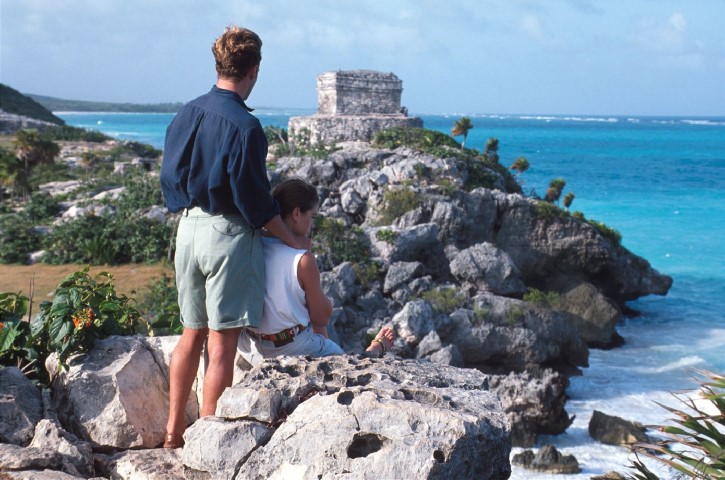
Tulum, Mexico – Overlooking the Sea
Mayan Riviera: Mexico’s Seacoast of History, Colour and Tourism
By Habeeb Salloum and Muna Salloum
The Mayan Riviera located along the Caribbean coastline of Quintana Roo State in Mexico includes fabulous natural wonders. Green lush jungles, ecological reserves and a myriad of ruins of Mayan cities along with near 90 miles of striking white sand beaches lapped by the beautiful turquoise waters of the edging sea give an aura of magic to this narrow strip of land.
Amid this beauty of nature dotted with all types of hotels and resorts and first-class tourist facilities that combine with the warm hospitality of its people, make this an appealing tourist playground. Also, for those who seek adventure tourism, it offers many options. It just seems to leave an image of the beauty of life on one’s soul.
Above all the Riviera is famous for its cenotes, those sweet water deposits of various shapes and many sizes created by subterranean rivers surfacing over millions of years. In addition, its coastline is renowned for the Great Maya Reef, being the largest coral reef in the western hemisphere. The Reef, an ideal place for snorkeling and scuba diving, is also home to hundreds of varieties of creatures of the sea.
Among other attractions of this historic strip of land is the Playa del Carmen, once a fishing village but now the largest city in the Mayan Riviera. It offers restaurants, boutiques and night-time entertainment along with a crystal-clear blue beach joined by an avenue of cafes, local and fine-dining restaurants, bars, souvenir and specialty stores.
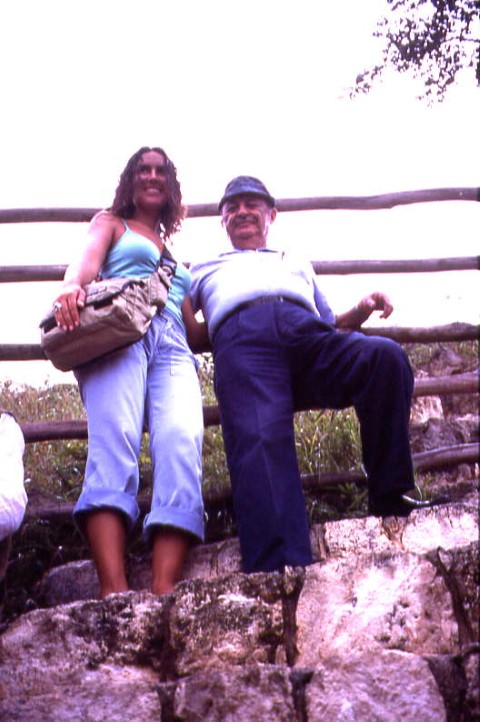
Mexico – Ek-Balam – Resting atop the Palace Pyramid
In the last few years, Playa del Carmen has become one of Mexico’s top resort spots, maintaining the charm of its past as a fishing village and a wonderful storehouse for fine Mexican handicrafts. To experience this city, it’s best to begin walking at 5th Avenue, popularly known as “La Quinta”, a pedestrian-only walkway.
From the Playa visitors can take a ferry to the island of Cozumel, the Mexican Caribbean’s largest island. Here the traveller will find beautiful beaches edged by crystal clear waters , ideal for scuba diving, snorkeling and deep-sea fishing. For dining, restaurants offer Yucatecan and other traditional Mexican foods. For shopping there is much to choose from such as colourful pottery, handmade hammocks, and gold and silver jewellery
Visit Tulum: the largest of the Mayan ceremonial cities and trading ports and the only one protected by a wall. Founded 1,500 years ago, the city was the only Mayan town inhabited when the Spanish Conquistadors landed on American shores. Noted for its scenic settings, the ruins d0raw tourists in droves.
Tour Xcaret and its Eco-Theme Park: a truly cultural and ecological experience, Xcaret was famous for over 1,000 years as the ceremonial Mayan port of ‘Pole’. Here Mayan pilgrims would come to purify themselves before crossing over to the island of Cozumel to worship the goddess Ixchel. Called by the Mayans ‘Little Inlet’, it was for them one of their most important ports and a revered ritual centre.
Today, Xcaret has been re-created into a 162 ha (400 ac) educational theme park built around its ancient Mayan ruins, giving them a somewhat exotic setting. This eco-archaeological park, one of the most spectacular theme parks in the world, is known to some as ‘nature’s sacred paradise’ and is one of the world’s friendliest organized nature reserves.
A stop at Aktun Chen Park is a must while touring the Mayan Riviera. Its name meaning ‘cave with cenote inside’ describes what it has to offer. The site is a fabulous natural ecological park with 405 ha (1,000 ac) of rainforest. It has a spectacular cave over 5 million years old featuring stalactites, stalagmites and columns with a beautiful cenote of crystal-clear water 12 metres (39 feet) deep in which visitors can swim. There are 10 zip lines for the adventurous who want to fly over tree tops to get the feel and view of the park’s tropical plants and fauna, along with 2 suspension bridges daring those unafraid of heights to walk on them to view what nature has to offer. The park also has a 2 ha (7 ac) wildlife zoo including a petting zoo for children.
Birdwatchers, ornithologists and anyone else who has an interest in birds should visit Xaman Ha Aviary. It is a protected natural open-air sanctuary for more than 60 bird-species with a total of 200 individual birds such as orioles, toucans, egrets, flamingos, and macaws . In addition to birds, the Aviary hosts other animals such as iguanas, butterflies, squirrels and turtles.
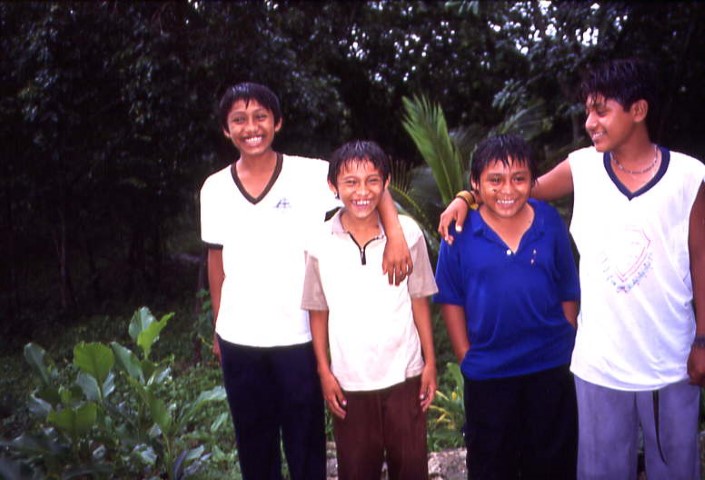
Mexico – Ek-Balam Mayan Children
After visiting these wonders of nature one should keep a day or two for visiting some of the nearby ruins of Mayan cities such as Coba, Ek Balam and one of the most magnificent sites, Chichen Itza. Yet no matter what visitors would like to do during their vacation in the Mayan Riviera, they will have an event-filled holiday.
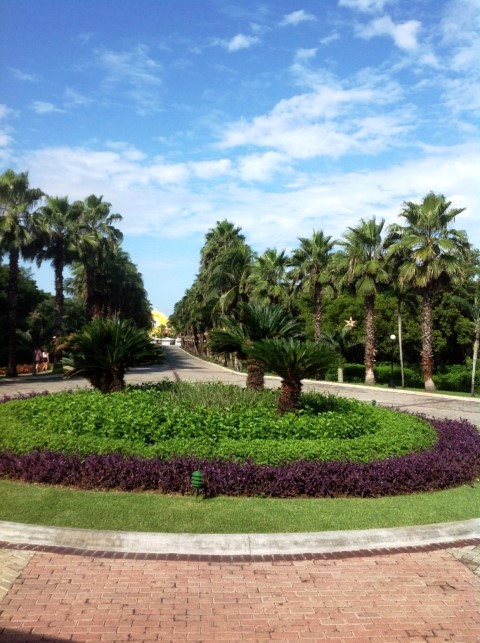
Mexico – Mayan Riviera – Bahia Principe Grounds
As for us, in this world of Mayan ruins, green forests, deep-blue skies and turquoise sea gently washing white sandy shores, we found our abode in the Luxury Bahia Principe Sian Ka’an. Here we enjoyed its luxury facilities while we explored the exotic surrounding countryside.
IF YOU GO:
Facts About Mayan Riviera:
- Getting there: Most tourists to the Riviera arrive via Cancun International Airport.
- The coastal area of the Yucatan Peninsula has a tropical climate. It is therefore best to wear cotton-based fabrics.
- In the Mayan Riviera, the use of regular sunscreens is prohibited for all water activities in the ecological parks, as part of the preservation of water-life ecology.
- Beware! It is a criminal offence to take artifacts from the sites or out of the country.
- The official Mexican currency is the peso currently trading at around 13.5 pesos to a US dollar; 12 pesos to a CDN dollar. However, at times both currencies are exchanged by some businesses at the same rate.
- The usual tips for baggage handlers and bellboys is $1.00 per suitcase; maids $1.00 per day and 50 cents for washroom attendants.
- Visitors to the Mayan Riviera should try the Mayan-based dishes: Sopa de lima, chicken broth with lime; codzitos, fried tortillas topped with tomato sauce and cheese; poc chuc, grilled pork with pickled onions and a sour sauce; panuchos yucatecos, fried tortillas filled with black beans and other goodies; pibil, a pork or chicken dish baked in banana leaves; and papadzules, tortillas with eggs, pumpkin seeds, tomato sauce and grilled seafood, are some of these foods.
- Some of the Mayan handicrafts offered in the Mayan Riviera are hipils (white cotton dresses with colourful designs), grayaberas (men’s short-sleeved cotton shirts), attractive tablecloths; and hand-woven wicker baskets, blankets and rugs.
- A few good tours to take to experience the Mayan world: Chichen Itza: the most important regional capital of the Mayan world – full day tour of the magnificent ruins; Ek Balam: ceremonial centre of the Mayans and the best preserved and newly restored; Coba: a good example of the Mayan world with its architecture, culture, flora and fauna.
Mexico – Mayan Women at Market
A Good Resort to Stay When in the Mayan Riviera:
The Luxury Bahia Principe Sian Ka’an (Don Pablo Collection): 100 km from Cancun airport, the resort, exclusive for adults, is modern style with an aura of peace and relaxation surrounded by nature’s splendour. There is access to all the speciality restaurants of its neighbouring complex Bahia Principe Riviera Maya Resort. It also has one of the best golf courses in the Riviera.
For further information about the Mayan Riviera:
Contact the Mexican Tourism Board
BIO:
Habeeb Salloum is a Canadian author who grew up in Saskatchewan, joined the RCAF during the Second World War, and then worked for the Canadian Department of National Revenue for 36 years. For the last 30 years he has been a full-time freelance writer and author specializing in food, history and travel. Besides 7 books and 20 chapters in books, he has had hundreds of articles about culture, food, travel, history and homesteading in western Canada appear in such publications as the Toronto Star, the Globe and Mail, the Western Producer, Contemporary Review, Forever Young, Vegetarian Journal and Saveur.
Habeeb was awarded the 2013 Saskatchewan Tourism Travel Media Award by the Saskatchewan Tourism on April 10, 2014 for his literary work on travel, tourism and the culinary arts of that province.

